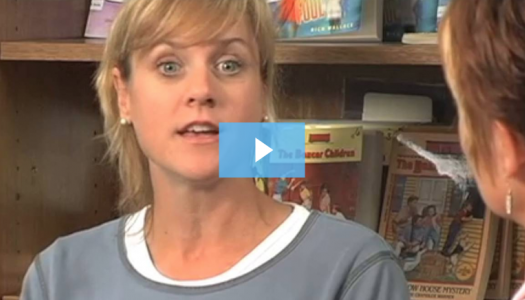Check for Understanding—The First Strategy Taught
Join Our Community
Access this resource now. Get up to three resources every month for free.
Choose from thousands of articles, lessons, guides, videos, and printables.

CAFE begins prior to the start of a new school year, or whenever you are ready to begin during the year. It begins when we put up the CAFE Bulletin Board.
There are no strategies posted as the year begins. When students enter our classroom on the first day of school or first day of using the CAFE, they see the CAFE board and the C A F E headings. Each heading has a brief definition under it: Comprehension "I understand what I read." Accuracy "I can read the words." Fluency "I can read accurately, with expression and just right rate." Expanding Vocabulary "I know, find and use interesting words"
Underneath each heading is a blank rectangular sheet of paper awaiting students' sticky notes with their names handwritten on them. This serves as a visual reminder of their goals as we settle into workshop routines. Below the blank rectangular sheet for goals is another, larger blank area for posting CAFE strategies as we teach them. We keep the blank multi-colored lined cards (3x9inches) near our gathering area for easy access.
When beginning to use The CAFE we bring students together on the floor for our first read aloud and lesson. We don't mention the CAFE board at that time, but begin with a read-aloud of a picture book to teach the first strategy, Check for Understanding. This is always the first strategy we teach to all grade levels because everything we do in reading is anchored back to comprehension and monitoring the making of meaning while reading. We launch the lesson with these words, "Girls and boys, as I read aloud to you today, I'm going to model for you how readers use a very important comprehension strategy, Check for Understanding. Every book is written because the author has something they want to tell us. Sometimes they want us to understand something or learn something new, or they might just want to tell us a story. The secret to this strategy is remembering to think about what the author is telling us when we read and to stop often to Check for Understanding, which means we want to be sure we are understanding what we read."
With every age group, we try to read aloud at least one picture book and a portion of an on-going chapter book each day. Shorter and longer texts both provide a perfect venue for introducing and modeling strategies. We select a picture book with beautiful illustrations and a great story line. After reading a page or two, we stop and tell the students, "Before I go any farther, I need to use my comprehension strategy and stop and check for understanding. I don't want to keep reading if I don't know what is going on in the story." When we model Check for Understanding, we stop every few pages and talk aloud, explaining the sense we are making of the text. Other times we model that we can't remember what we read, or it doesn't make sense. We believe it is just as important to model not understanding and making adjustments when comprehension breaks down.
"Boys and girls, did you notice that when I stopped to Check for Understanding I didn't understand what was happening in the story? I can't continue to keep reading if I don't know what the author was just trying to tell me or I won't understand the rest of the story. So when I don't understand what I am reading, here is what I do. I back up and reread." We continue with this type of modeling through the whole book. At the end of the book, we pull out a blank strategy card in a holder next to the board. "Boys and girls, I just modeled for you one of the most important strategies readers use. Does anyone remember what words I used to describe this strategy?" Students call out "Check for Understanding," or we share the words with them. We ask a student to write the words on a strategy card (giving them a sticky note to refer to if necessary) and post it under Comprehension.
This is the first strategy we post every year, because it is such a critical one for most readers. We then introduce the CAFE Menu board to them -- "This is the board we'll be using all year to remind you of the strategies we teach that will help you as readers. We put strategies up on this board so that you can look at and try many different strategies as you read. It's a menu. How many of you have ever been to a restaurant? They hand you a menu, or you look up above the counter to see all the choices of the things you could eat." Students all have experience with menus, even if it's just from a fast-food restaurant. We explain, "When you're picking out food from a restaurant menu, you make choices depending on what sounds tasty to eat, and what will be healthy for you. When you are reading, you choose different strategies to understand different types of books. If you're reading your favorite picture book, you might use certain strategies. If you're reading magazines or newspapers, you might have other ways of making sense of what you're reading. If you're reading on the Internet or gathering information on the computer, different strategies might be more effective."
Depending on the age of the students, we adjust our language to the kinds of texts they are most likely to see and use daily. We will reinforce and refer back to this "Check for Understanding" strategy repeatedly throughout the first days and weeks of school. We do not introduce or explain the other headings on the board at this time, but wait until some of the strategies that go with them are introduced. No matter the age of your students, they seldom enter school in September with a great deal of stamina for extended reading and writing on their own. Because of this, we often read three or four picture books the first day of school to ease students into routines and build community. These first-day read-alouds are the perfect opportunity for reinforcing Check for Understanding, as well as introducing a couple more strategies to add to the board. We even physically touch the Check for Understanding card as we mention the strategy again on the first day, or during the first weeks of school so that it is anchored in the students' minds.





